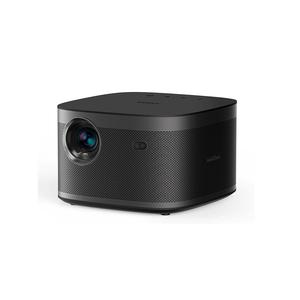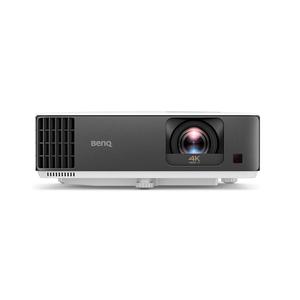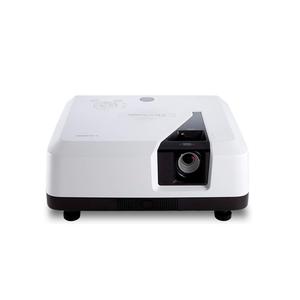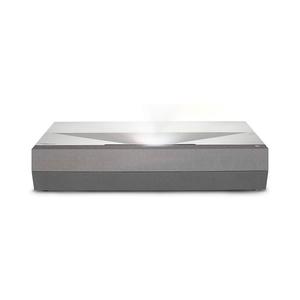What is Ambient Light? Your Guide to Enhancing Projector Performance
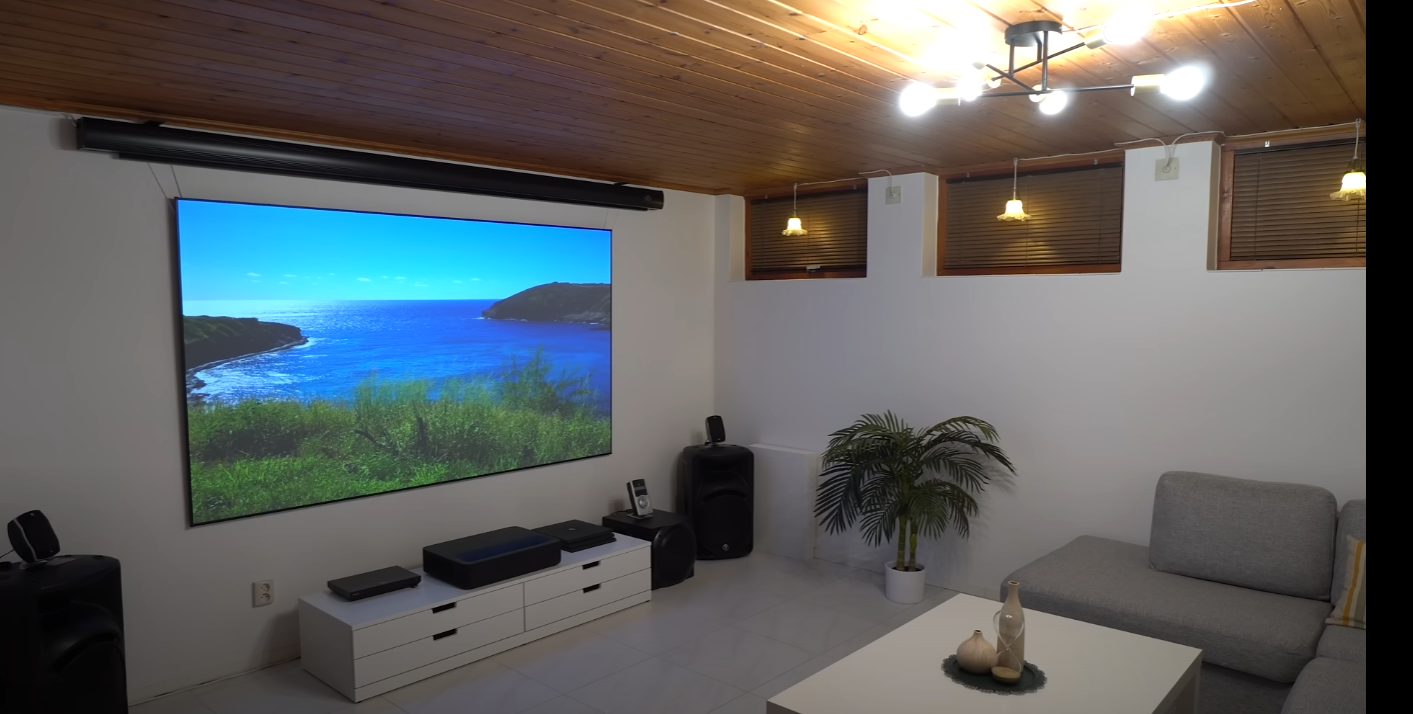
Imagine sitting in a darkened room, eagerly anticipating a movie night with friends, only to find that the projected image appears washed out and lacks the vibrant colors you were expecting. Frustrating, isn't it? Well, fear not, for the answer lies in understanding the enigmatic concept of ambient light in projectors. In this blog post, we embark on a journey to demystify the influence of ambient light on projector performance, exploring how it affects image quality, color accuracy, and overall viewing experience. So, whether you're a seasoned cinephile or a casual movie enthusiast, fasten your seatbelts as we shed light on this crucial but often overlooked aspect of the projector world.
But first, let's ponder: why does ambient light matter in projector setups? How does it impact our cinematic experience? Is it possible to achieve stunning visuals even in well-lit environments? In this comprehensive guide, we will delve into the science behind ambient light, uncover the relationship between light and perceived image quality, and equip you with the knowledge to optimize your projector's performance in any lighting condition. Get ready to unlock the secrets of ambient light, as we embark on a quest to enhance your projector viewing experience like never before.
Short answer: Ambient light refers to the existing or surrounding light in a given environment. It encompasses all the natural and artificial light sources present in a room or space. The level and quality of ambient light play a crucial role in our visual perception and can significantly impact the performance of projectors and other display devices. Excessive ambient light can wash out projected images, reducing contrast and color accuracy, while a well-controlled ambient light environment allows for optimal image clarity and vibrancy. Understanding and managing ambient light is key to achieving the best possible viewing experience with projectors, ensuring that images are sharp, vivid, and visually captivating.
- What Exactly is Ambient Light
- Tips to Optimize Projector's Performance in Different Lighting Conditions
- FAQ About Ambient Light
What Exactly is Ambient Light
Ambient light refers to the existing or surrounding light in a given environment. It includes all the natural and artificial light sources present in a room or space where a particular activity is taking place. Ambient light is not generated by the primary light source itself, such as a projector, but rather encompasses all the other light sources that contribute to the overall illumination in the area.
Here are a few key points to help you understand ambient light:
-
Natural ambient light: It comes from the sun or other natural sources like daylight entering through windows or skylights. The intensity and color of natural ambient light can vary throughout the day, affecting the overall lighting conditions.
-
Artificial ambient light: It refers to the light generated by artificial sources like overhead fixtures, lamps, or any other lighting installations within the space. These sources can include fluorescent lights, incandescent bulbs, LED lights, etc.
-
Impact on visual perception: Ambient light plays a crucial role in how we perceive colors, contrast, and overall visual quality. Excessive or inadequate ambient light can affect the visibility, clarity, and color accuracy of projected images or any other visual content.
-
Management and optimization: To ensure optimal viewing experience, it is essential to manage and control the ambient light in a way that complements the primary light source, such as a projector. Strategies like adjusting the room's lighting, using shades or curtains, or employing specialized screens can help mitigate the impact of ambient light and improve the image quality.
Understanding ambient light and its influence on projector performance is essential for achieving the best possible viewing experience. By managing ambient light effectively, you can enhance image clarity, color accuracy, and overall visual impact when using a projector in different environments.
In case you're on the hunt for intriguing projector models, here's our curated list of the top six choices for 2024:
- Excellent 4K image quality
- Stylish and premium design
- Affordable price
- Intelligent screen adaptation technology
- Powerful and high-quality Harman Kardon speakers
- Android TV 10.0 with a rich selection of applications and functions
- Short-throw projection ideal for small spaces
- 4K resolution with low input lag
- Android TV integration
- Compatible with major gaming consoles
- Easy setup with flexible image adjustment features
- 4K UHD resolution with 3,300 lumens
- Long-lasting light source up to 20,000 hours
- HDR compatibility and SuperColor technology
- Flexible connectivity with HDMI, USB, and more
- 3D Blu-ray ready with 360-degree orientation
- Decent 480p image quality with support for HDR10
- Simple and compact design
- Portability and long battery life
- Dolby Digital Plus and Dolby Atmos
- Android 7.1 with sufficient choice of apps and features
- Highly portable with 180-degree rotation
- Auto Leveling, Focus, and Keystone
- Access to a wide range of smart entertainment options
- Dedicated Gaming Hub
- Immersive 360-degree audio with external audio connectivity options
- Ultra-short throw design
- Laser light source for long-lasting and bright performance
- Built-in soundbar with Dolby Digital 2.0
- Smart TV interface with voice control and streaming apps
Tips to Optimize Projector's Performance in Different Lighting Conditions
Understand the impact of ambient light:
- Ambient light refers to the existing light in a room or environment where the projector is being used.
- Excessive ambient light can diminish the image quality, contrast, and color accuracy of the projected content.
- It's important to consider the lighting conditions and make adjustments accordingly to enhance your viewing experience.
Determine the ambient light level:
- Evaluate the amount of ambient light in the room where the projector is installed.
- Turn on the projector and observe the image quality with different lighting conditions, including daytime, artificial lighting, or evening settings.
Optimize projector placement:
- Position the projector away from direct sources of ambient light, such as windows or bright lamps.
- Adjust the projector's angle and height to minimize interference from ambient light sources.
Consider ambient light rejecting screens:
- Invest in a high-quality ambient light rejecting (ALR) screen.
- ALR screens are designed to reflect the projected light directly back to the viewers while minimizing the impact of ambient light from other angles, resulting in improved contrast and image clarity.
Use projector settings to compensate for ambient light:
- Adjust the projector's brightness, contrast, and color settings to counterbalance the impact of ambient light.
- Increase brightness levels in well-lit environments to maintain image visibility.
- Experiment with different color modes or presets provided by the projector to find the best option for your specific lighting conditions.
Consider using curtains or blinds:
- Install curtains or blinds to block out excessive ambient light when using the projector.
- This can significantly improve image quality by reducing the amount of unwanted light reaching the projection surface.
Remember, achieving the best possible image quality with projectors in various lighting conditions is a combination of both optimizing the projector's settings and managing the ambient light in the environment. By implementing these tips, you should be able to enhance your viewing experience and enjoy your projector to the fullest.
FAQ About Ambient Light
How does ambient light impact the image quality of a projector?
Ambient light can significantly affect the image quality produced by a projector. Excessive ambient light can wash out the projected image, reducing contrast and color saturation. It can make the image appear dull and less vibrant. On the other hand, a darkened room with minimal ambient light allows the projected image to stand out, providing better contrast, color accuracy, and overall image clarity.
Can't I just increase the brightness of the projector to combat ambient light?
While increasing the projector's brightness can help compensate for ambient light, it has its limits. Overly bright projectors can lead to eye strain and reduced image quality. Additionally, high brightness alone may not solve the problem if the ambient light is too intense. It's important to strike a balance between projector brightness and managing the ambient light in the room.
Are there specific projectors designed to perform better in ambient light?
Yes, there are projectors available with enhanced brightness and contrast capabilities, specifically designed to handle ambient light better. These projectors often have higher lumen output, improved color processing, and advanced technologies to combat the negative effects of ambient light. However, even with specialized projectors, managing ambient light in the environment remains crucial for optimal image quality.
Are there any affordable solutions to minimize the impact of ambient light?
Yes, there are cost-effective ways to address the impact of ambient light on projector performance. Consider implementing the following:
- Adjusting the projector's settings: Fine-tune brightness, contrast, and color settings to optimize image quality in the given lighting conditions.
- Using curtains or blinds: Install light-blocking curtains or blinds to control and reduce the amount of ambient light entering the room.
- Utilizing an ambient light rejecting (ALR) screen: ALR screens are designed to reflect the projector's light while minimizing the impact of ambient light, resulting in improved contrast and image clarity.
Can I use projectors in well-lit environments?
It is possible to use projectors in well-lit environments, but managing the ambient light becomes crucial. Employing techniques such as using higher brightness projectors, optimizing projector settings, and reducing ambient light through curtains or blinds can help improve visibility and image quality. However, for the best viewing experience, a darkened or dimly lit environment is generally recommended.
